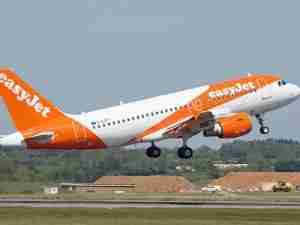By Peter A. Buxbaum, AJOT
An American food giant with $12 billion in annual sales, ConAgra Foods Inc. recently faced the daunting task of consolidating its considerable stable of truckers and centralizing the management of its remaining core carriers. The Omaha-based packaged food company, which markets its products under well-known brands such as Chef Boyardee, Healthy Choice, Hebrew National, Hunt's, Marie Callender's, Orville Redenbacher's, and Reddi-wip, might have been motivated to reconfigure its transportation management for reasons of its own. Managing hundreds of transportation contractors on a decentralized basis had become quite unwieldy.
The fact is that ConAgra was pushed to make the changes by its retail store customers. As retailers gained in supply-chain power in recent years, they demanded a different kind of delivery scheme from ConAgra.
'The retailers wanted to be delivered to as simply and as efficiently as possible,' said Paul Dillon, ConAgra's former director of transportation, and now a transportation consultant, who spoke at a November 13 webinar. 'Our executive management responded by deciding to streamline the supply chain and creating eight major mixing centers where we would mix products for delivery to customers. That means with one truck and one invoice we would deliver all of our products to retailers.'
These supply chain changes meant that ConAgra had to develop whole new categories of transportation lanes and infrastructure. This also led to ConAgra's transportation folks taking a close look at how they managed transportation procurement.
'We managed an organization that was completely decentralized,' Dillon said. 'We had hundreds of carriers, with an average of about twenty per facility, with innumerable contracts, and a variety of accessorial charges and fuel surcharges. There was a significant administrative component to managing this operation.'
In order to adapt to customer demands, ConAgra had to completely reconfigure its transportation function and remap many of its lanes. 'The administrative burden of managing 350 carriers was too much,' Dillon said. 'We decided we had to reduce our carrier base and to put the mechanics in place to develop long-term partnerships with trucking companies.'
Besides the benefits of responding to customer needs, reconfiguring transportation operations can bring efficiencies to companies, according to Paul Blalock, executive director for transportation solutions at CombineNet, a provider of an automated transportation quote and bid tool, who spoke at the same webinar.
Any such effort requires a company to compile accurate lane traffic information, Blalock added. He cited a recent MIT study which found that configuring zip code-to-zip code transportation lanes can reduce transportation costs by four percent over lanes developed on a region-to-region or state-to-state basis.
'Transportation is a balancing act between operational preferences and savings goals,' Blalock commented. 'Everyone approaches a sourcing event with savings in mind, but you have to think of the impact on other components of the company.'
Dillon's approach to ConAgra's problem was to assemble a committee of transportation stakeholders within the company. This included representatives of a dozen different functions, including finance, warehousing, sales, and legal. 'One benefit to this approach was to be able to fully flesh out our strategy,' Dillon said, 'to make sure it encompassed all dimensions of the organization.'
Streamlining the process
Early on in the process, Dillon determined he needed a tool to help in the decision making process. The tool had to help in two areas: administration and math. 'We needed something that could organize and analyze information being submitted by 450-plus invited carriers,' Dillon explained.
The effort to find such a tool was conducted through a bidding process during which ConAgra examined the submissions










